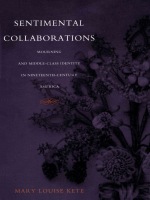
Interfaith marriage is a visible and often controversial part of American life--and one with a significant history. This is the first historical study of religious diversity in the home. Anne Rose draws a vivid picture of interfaith marriages over the century before World War I, their problems and their social consequences. She shows how mixed-faith families became agents of change in a culture moving toward pluralism.
Following them over several generations, Rose tracks the experiences of twenty-six interfaith families who recorded their thoughts and feelings in letters, journals, and memoirs. She examines the decisions husbands and wives made about religious commitment, their relationships with the extended families on both sides, and their convictions. These couples--who came from strong Protestant, Catholic, and Jewish backgrounds--did not turn away from religion but made personalized adjustments in religious observance. Increasingly, the author notes, women took charge of religion in the home. Rose's family-centered look at private religious decisions and practice gives new insight on American society in a period when it was becoming more open, more diverse, and less community-bound.


Many scholars have written about the sentimental novel as a primarily female genre and have stressed its negative ideological aspects. Kete finds that in fact many men—from writers to politicians—participated in nineteenth-century sentimental culture. Importantly, she also recovers the utopian dimension of the phenomenon, arguing that literary sentimentality, specifically in the form of poetry, is the written trace of a broad cultural discourse that Kete calls “sentimental collaboration”—an exchange of sympathy in the form of gifts that establishes common cultural or intellectual ground. Kete reads the work of Ralph Waldo Emerson, Henry Wadsworth Longfellow, Mark Twain, Harriet Beecher Stowe, and Lydia Huntley Sigourney with an eye toward the deployment of sentimentality for the creation of Americanism, as well as for political and abolitionist ends. Finally, she locates the origins of sentimental collaboration in the activities of ordinary people who participated in mourning rituals—writing poetry, condolence letters, or epitaphs—to ease their personal grief.
Sentimental Collaborations significantly advances prevailing scholarship on Romanticism, antebellum culture, and the formation of the American middle class. It will be of interest to scholars of American studies, American literature, cultural studies, and women’s studies.
READERS
Browse our collection.
PUBLISHERS
See BiblioVault's publisher services.
STUDENT SERVICES
Files for college accessibility offices.
UChicago Accessibility Resources
home | accessibility | search | about | contact us
BiblioVault ® 2001 - 2024
The University of Chicago Press









